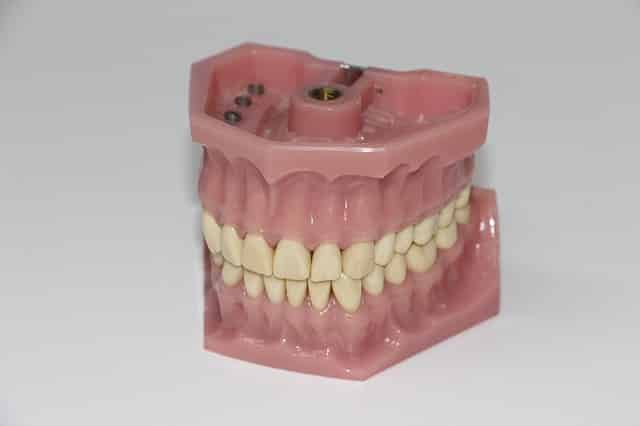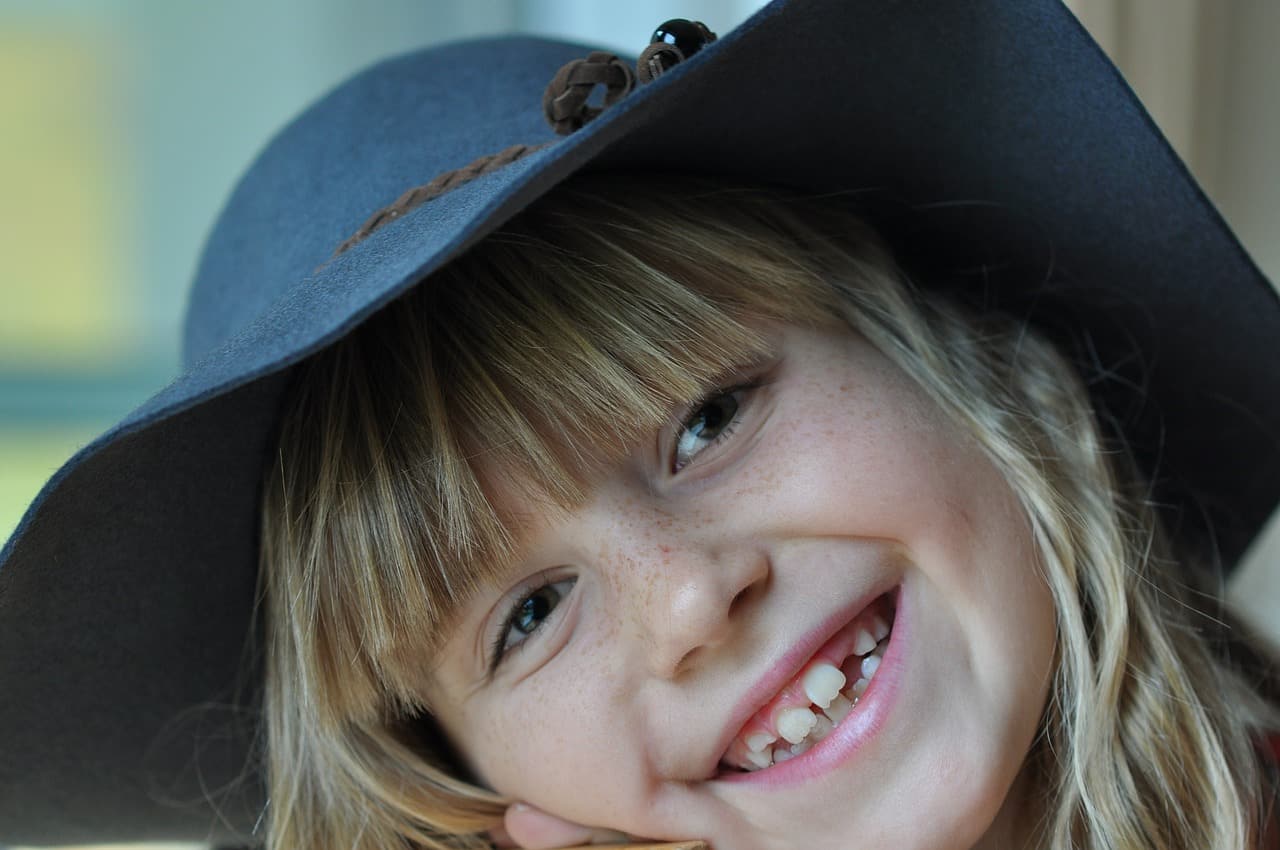How many teeth a human has depends on his or her age; children have fewer teeth than adults, just 20 compared to a full-grown adult who has 32 teeth.
There are also several types of teeth that will be found in a person’s mouth. Each type of tooth plays a role in chewing and breaking down food.
5 Types of Teeth
Incisors: Incisors are usually the first adult teeth that grow in after primary teeth, or baby teeth, and make up most of the teeth you see when people smile. There are eight incisors in the mouth; four in the top-center of our mouth and four in the bottom-center. These teeth are generally thin, flat-bottom teeth that help us take the initial bite of our food. Incisors have a narrow-edge, and are adapted for cutting. The incisors are situated between the cuspids, or canines, and are often referred to as anterior teeth or front teeth because of their prevalence in smiling and talking.
Cuspids / Canines: Cuspids, also known as canines, are the closest link between the human mouth and that of a carnivorous predator, like a tiger or wolf. Mirroring the pointed teeth we associate with predatory animals and vampires, these are the sharp, pointed teeth on either side of our incisors that are used to do exactly what they look like – tear into food and rip it apart. These pointed teeth usually come in permanently around the ten year mark, with the bottom cuspids arriving just before the upper cuspids. One feature of cuspids and canine teeth is the fact that they are our longest teeth, with a pointed end, and only one implanted root. Canines rip food, but their position on either side of the mouth help guide the mouth and other teeth into the best biting position.
Molars: Molars are our main masticators – that is, molars are the teeth we most commonly associate with chewing. There are actually a few different types of molars. Molars are large teeth with a flatter surface that are used to chew food into small, easily consumable pieces. The different types of molars are below.
Premolars / Bicuspids: Premolars, or first molars, are the first molar teeth that tend to come in around twelve or thirteen years of age. Premolars sit next to the cuspids in the mouth and are the foremost molars in the mouth.
Wisdom Teeth / Third Molars: Wisdom teeth, or third molars, are often referred to as third molars because they are the last teeth to come into the mouth. Many people get their wisdom teeth removed; these teeth sit so far back in the jaw that they can often cause issues if not removed.
The Different Parts of the Teeth
Human teeth are made up of four different types of tissue: pulp, dentin, enamel, and cementum.
- The pulp is the innermost portion of the tooth and consists of connective tissue, nerves, and blood vessels which nourish the tooth. The pulp has two parts — the pulp chamber, which lies in the crown, and the root canal, which is in the root of the tooth. Blood vessels and nerves enter the root through a small hole in its tip and extend through the canal into the pulp chamber.
- Dentin surrounds the pulp. A hard yellow substance, it makes up most of the tooth and is as hard as bone. It’s the dentin that gives teeth their yellowish tint.
- Enamel, the hardest tissue in the body, covers the dentin and forms the outermost layer of the crown. It lets teeth withstand the pressure of chewing and protects them from harmful bacteria and changes in temperature from hot and cold foods.
- A layer of cementum covers the outside of the root, under the gum line, and holds the tooth in place within the jawbone. Cementum is also as hard as bone.
How Many Teeth Do Adults Have?
 A complete set of adult teeth will include 8 incisors, 4 canines, 8 premolars, and 12 molars; however, this total assumes that the adult in question has 4 wisdom teeth and has kept all of them. More commonly, adults have 28 teeth as they often have to get their wisdom teeth extracted due to alignment issues or impaction (the mouths of modern humans often do not have enough room to fit in four extra molars). It is believed that in the past most humans lost one or more molars by their early twenties, so ancient humans likely did not keep a complete set of 32 adult teeth either and their wisdom teeth replaced molars already lost due to injury or the rigours of consuming very coarse food.
A complete set of adult teeth will include 8 incisors, 4 canines, 8 premolars, and 12 molars; however, this total assumes that the adult in question has 4 wisdom teeth and has kept all of them. More commonly, adults have 28 teeth as they often have to get their wisdom teeth extracted due to alignment issues or impaction (the mouths of modern humans often do not have enough room to fit in four extra molars). It is believed that in the past most humans lost one or more molars by their early twenties, so ancient humans likely did not keep a complete set of 32 adult teeth either and their wisdom teeth replaced molars already lost due to injury or the rigours of consuming very coarse food.
Adults should do everything they can to take care of the 28 teeth they typically have, dentists advise; loss of any adult tooth can cause the teeth around it to shift and loosen, leading to poor bite alignment and a heightened risk of losing further teeth.
How Many Teeth Do Kids have?
Most children will have about 20 teeth prior to their adult teeth beginning to erupt—10 on the top and 10 on the bottom. These “baby teeth” (the medical term for which is “deciduous teeth,” thus named after the fact that these teeth are destined to fall out) usually begin to come in around six months of age, leading to the discomfort and upset of teething.
These teeth act as “placeholders”, allowing children to consume their food properly and supporting the development of healthy jawbones. As such, it’s important to take very good care of these early teeth despite their temporary status. Likewise, caring for these teeth regularly sets children up to establish proper oral care practices which will become a lifelong habit.
Usually, a child will begin to lose his or her “baby teeth” starting around the age of six. Adult teeth will continue to erupt, replacing these lost teeth and filling in additional spaces in the mouth, until the child is in his or her early teens.
How to Take Care of Your Teeth
Taking care of your teeth is necessary for overall health. Children need to learn these habits at a young age so that they know the proper things to do as an adult. See a dentist for regular cleanings 2x a year, (or more, if directed) and make sure to get x-rays as directed as well. These regular cleanings will help prevent any small issues from getting worse.
The way you brush your teeth is also important — in fact, brushing your teeth poorly or improperly is almost as bad as not brushing at all. Take your time, moving the toothbrush in gentle, circular motions to remove plaque. Unremoved plaque can harden, leading to calculus buildup and gingivitis (early gum disease).

